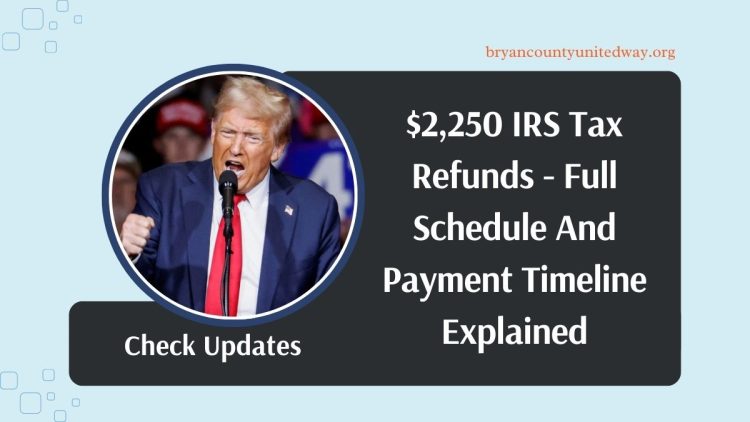As of March 2025, thousands of American households are beginning to receive their $2,250 tax refunds. The Internal Revenue Service (IRS) has ramped up its efforts in processing and distributing pending returns, bringing timely financial relief to many.
Taxpayers who filed their returns in February or early March are now seeing direct deposits land in their bank accounts.
Why the $2,250 Refund Is Important
This tax season, the average refund is around $2,250, offering meaningful support to families coping with ongoing cost-of-living challenges.
While these refunds are part of the standard tax return process, many are being processed more quickly this year thanks to enhanced IRS systems and steps taken to clear backlogs.
IRS Refund Distribution Schedule
The IRS typically processes tax returns within 21 days from the date of filing, provided there are no issues or required verifications.
Here’s an estimated timeline of when refunds are being deposited based on filing dates:
| Date Filed | Estimated Direct Deposit Date |
|---|---|
| February 24 | March 17 |
| February 25 | March 18 |
| February 26 | March 19 |
| February 27 | March 20 |
| February 28 | March 21 |
| February 29 | March 22 |
| March 1 | March 23 |
| March 2 | March 24 |
| March 3 | March 25 |
| March 4 | March 26 |
| March 5 | March 27 |
| March 6 | March 28 |
| March 7 | March 29 |
| March 8 | March 30 |
Note: These dates are estimates. Actual deposit times may vary depending on individual return circumstances and banking institutions.
How Refunds Are Issued
The IRS primarily distributes refunds through Direct Deposit, which is the fastest and safest delivery method.
Taxpayers who chose to receive a paper check may experience delays of up to a week or more beyond the direct deposit timeline.
To ensure quick and smooth refund delivery:
- Make sure your banking details are accurate when filing.
- Ensure that all supporting documents were submitted and validated by the IRS.
Top Reasons for Refund Delays
Although most refunds are issued within 21 days, certain issues can lead to delays, including:
- Errors or incomplete details on the tax return.
- Filing for specific tax credits (like EITC or CTC) that require additional verification.
- Returns flagged for identity checks.
- Manual review triggered by inconsistent or missing data.
What You Can Do While Waiting
Taxpayers waiting for their refund can check its progress using the IRS’s “Where’s My Refund” tool online. This tool provides real-time updates including:
- Confirmation that the return was received
- Approval status
- Refund sent status
To use the tool, you’ll need:
- Your Social Security number
- Filing status
- Exact refund amount
Tips to Maximize or Speed Up Your Refund
To get the most out of your refund experience in the future:
- File electronically and select direct deposit
- Review your return thoroughly for accuracy before submission
- File early to avoid peak processing delays
- Report all income sources and accurately claim deductions
Tax Filing Deadline and Extensions
The deadline to file federal taxes is still April 15, 2025.
Taxpayers needing more time can file for an extension; however, any taxes owed must still be paid by April 15 to avoid interest and penalties.
If you’ve already filed, no additional action is required unless the IRS contacts you. Refunds are issued automatically once your return is processed and approved.
Conclusion
The IRS has started distributing the $2,250 average tax refunds, helping families across the U.S. manage living expenses.
By understanding how the process works—and being aware of estimated deposit dates—taxpayers can better plan their finances and avoid unnecessary stress.
FAQs
How long does it take to get the $2,250 refund after filing?
Typically, refunds are processed within 21 days if filed electronically and there are no issues.
Do paper checks take longer than direct deposits?
Yes. Paper checks usually arrive 7–10 days after the expected direct deposit date.
What if my refund hasn’t arrived after 21 days?
Use the “Where’s My Refund” tool on the IRS website to check your status. If there’s still no update, contact the IRS directly.




